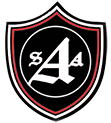4th grade is another pivotal point in your students elementary school career. In this grade level, students begin to move away from concrete operational math skills to more critical thinking and abstract math skills. This is why learning their math facts from previous grade levels are so important. If your student is still struggling with multiplication facts, this should be practiced every single night. So much of practicing math at home is really just through conversations.
Things your 4th grader should be able to do by the end of the year are:
- Use the four operations (add, subtract, multiply and divide) multi-step equations and word problems
- Understand and know what factors and multiples are
- Create and analyze patterns
- Understand place value up to 1 million
- Use place value understanding to perform addition and subtraction problems, with and without regrouping
- Continue their understanding of fractions- order fractions, find equivalent fractions, with and without common denominators
- Add and subtract fractions
- Relate fractions to decimals (understanding that .5 is the same is 1/2)
- Solve problems involving measurement and conversion of measurements from a larger unit to a
smaller unit. (units to know are ft., in, km, m, cm) - Use the four operations to solve word problems involving distances, intervals of time, liquid
volumes, masses of objects, and money. - Represent and interpret data (line plots, bar graphs)
- Geometric measurement: understand concepts of angle and measure angles. (most important angles to learn are acute, obtuse, and right angle).
Things to do at home with your student:
- Practice math facts every night!
- Dice games to practice addition and subtraction- all you need are two dice (can even get away with just using 1!) and a piece of paper. Roll the dice up to 7 times, write down each number you roll. Then, have your student roll 7 times as well, writing down each number. Now add them up! For subtraction, have your student determine the greatest number so they know which number goes on top.
- Cooking/ baking- if a recipe calls for 2 tablespoons, give your student a teaspoon and ask them to figure out how many they will need to use. Have them add or subtract parts from a fraction that a recipe calls for.
- Have them figure out the time on a non-digital clock, ask them questions such as how long until we eat dinner, or how long has it been since you got home from school
- Practice measurement conversion
- When you’re out and about, ask them about the angles of certain things (does that look like an obtuse or acute angle? etc.)

